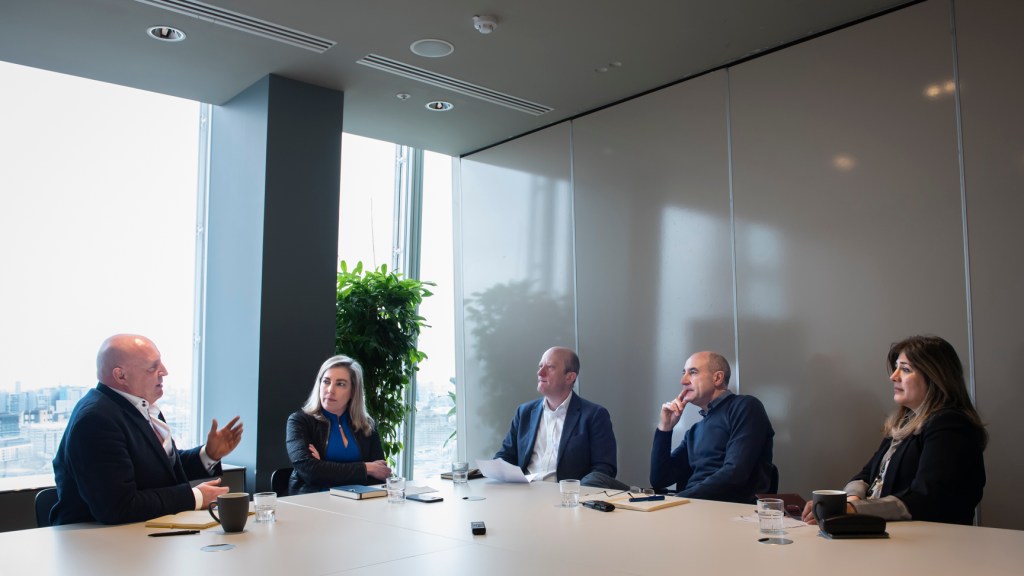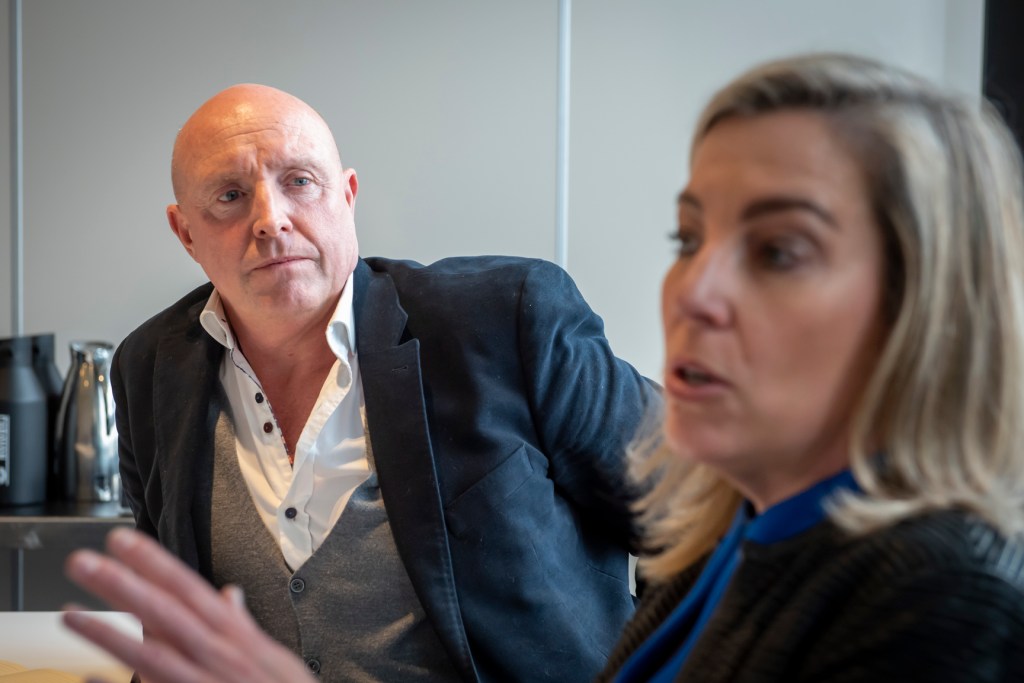Earlier this month, Yardi and Property Week brought together a panel of experts to discuss the importance of scaling up provision in the build to rent sector, the role of technology, the significance of branding and what the future holds.

Panel of experts
- Simon Chatfield, head of BTR development, John Lewis Partnership
- Lesley Roberts, director of BTR operations, Godwin Developments
- Sowgol Zarinchang, managing director, Way of Life
- Justin Harley, regional director, Yardi
- Chair: Andrew Saunders, contributing editor, Property Week
Build to rent (BTR) has been one of the fastest-growing and successful sectors in residential property over the past few years, but it still represents a modest 1.5% of the total private rented sector (PRS) stock, according to a recent BPF/Savills survey. How important is it to scale up BTR provision, and how soon might it happen?
Simon Chatfield: When you talk about scale, there is scale for the sector and scale for the individual operators. In terms of the sector, it has moved on massively in the past 10 years, as those of us who have been in it over that time have seen. We are now approaching the tipping point – the public are starting to ‘get’ BTR because they have had some exposure to it. If you go to somewhere like [BTR hotspot] Manchester and talk about BTR, the market and the customers know what that means now.
So, the next step is to get the messaging across that BTR is a real alternative and the benefits that living in BTR can bring for residents, and also about what it is doing for the housing supply and what it is doing for the wider PRS. We are in the position where we can really drive the sector forward now.

Lesley Roberts: Scale is important commercially, strategically and in addressing the housing shortage. We are in a housing crisis and doing things at scale is the only way we are going to move the dial. It is also vital because the BTR model relies on scale. It is not like a traditional housebuilder with a build-one-sell-one approach; it is a journey of incremental gains throughout the whole process and that relies on the economies of scale. You can aggregate things like utility contracts, for example, effectively buying in bulk and getting wholesale rates. Investors also like scale because they want to deploy large amounts of capital quickly. It is not worth their while to do so in small batches.
Sowgol Zarinchang: Scale is important for investors, operators and our customers. It can help address the shortage of accommodation in the living sector. The development cycle is costly and time-consuming. The investors like the economy of scale and maximising the potential usage of opportunities. It can reduce the initial set-up and long-term operational costs for them. Take ESG as one example that the scale can justify the cost versus full benefits for all. We are at the beginning of the journey and need to accelerate our plans.
The next step is to get the messaging across that BTR is a real alternative and the benefits that living in BTR can bring
Simon Chatfield
Chatfield: Scale also drives a better-quality customer experience. If you can buy broadband more cheaply, you can look at giving new customers a gift of gigabyte broadband instead of, say, 30mbps. And you can improve the turnaround time on maintenance – if you are operating national maintenance contracts you can get bigger issues resolved in one instead of two days.
Justin Harley: There is a latent promise of quality in BTR. The competition comes largely from the PRS. There are a lot of buy-to-let landlords and the quality is very variable. By contrast, in BTR the existing providers provide – really without exception – a very high-quality service. But you can only do that at scale, because you can only provide a consistent high-quality service if you have the systems and processes in place that scale affords you.
What are some of the key challenges around achieving scale in BTR?
Roberts: I do not think we have actually seen the full challenges come through in the sector yet. What will the sector look like in 10 years when we have closer to half a million homes built, or even more? We tend to think that we in the BTR sector are the experts in customer service and community design, but we should not live in an echo chamber. We should also be looking outside the sector at those who have done scale before and what they got right or wrong. We could learn a lot from retail and hospitality and from social housing, for example.

I suspect that keeping the character and community – the soft touches that make BTR special – without becoming too vanilla or process-driven will be really hard. I describe BTR as being like a graphic equaliser, and your microsite is a particular song. You have to tweak the graphic equaliser for each site, because every site is slightly different – it has different demographics, different amenities, different investment drivers and different people running it.
Chatfield: We all know that the secret of a great building is the general manager. But as you get scale, you have many different buildings at different price points – how do you get that consistency across all of them?
Zarinchang: Consistency of service – it must be embedded within your culture and vision. Everyone needs to be clear about the role they are playing and have the right tool to achieve the end goal. It is also about ensuring that the investors back that vision. If you want to scale, you must have the right infrastructure, recruit passionate people and have the right leadership and management skills.
What is the role of technology in scaling BTR?
Roberts: BTR is like hotels or any business that is service-driven – what you see as the customer is the front of house, the general manager and the team on site. Those people are one of the most important ingredients but there are lots of other ingredients, too. There is a huge amount going on underneath – in the back office for example, especially on the investor side, which is highly regulated. That requires pretty considerable systems and technology infrastructure – compliance, audit, health and safety. The list goes on.
Zarinchang: Technology’s role is significant. It allows us to analyse the data and make the right strategic and commercial decisions. With technology, you can streamline processes and provide a better service to the customers. But it cannot replace a personal touch and there should be a person available to answer your questions when you want to ask them.
In future, it will be less about one service for all and more about tailoring your service to individual needs
Sowgol Zarinchang
Chatfield: Another benefit of scale is that it gives you the capability to invest. You can put in the right tech that frees up general managers to produce a better standard of service because the tech takes stuff away from them. They do not have to worry about when the fire alarm is going to be tested, because there is a piece of tech that throws out a notification; or about checking the accreditation of someone who arrives to do some work on site, because they are already on the system.
Harley: Technology is not about buying shiny new bits of kit; it is about people and change management. It is about automating the transactional stuff so that the people in the front can provide a better experience for the customer, because customers do not value tech, they value service. Not everyone in the sector gets that yet – I have seen general managers inputting payables because they did not have the right tech to support them. That is an inefficiency that cannot be allowed to remain. They should be building relationships with customers, not checking payables.
What is the significance of branding in scaling BTR?
Roberts: John Lewis coming into BTR is one of the best things that has happened for the sector, because the John Lewis brand is already so established. So, when we are explaining what BTR is – that it is a rental product that allows you to have a certain lifestyle and that it is definitely not a substandard option – well, John Lewis has just saved us all a huge amount of marketing cost because so many people already recognise the brand and what it stands for. It is a bit like playing tennis – when you play against a good opponent you play a better game yourself.
Zarinchang: John Lewis has been around for a very long time and people trust the brand. They know that if they live in a John Lewis building, they will get the quality of assets and customer service that they expect. It is harder for a small operator to get into that position.
Chatfield: The drivers for John Lewis entering this market are absolutely to provide high-quality homes and to take the John Lewis vision of customer service and sustainability and bring that into providing homes. And we have got investors that desperately want to invest in it. That is why John Lewis has come in, because we have got those attributes and they fit very well with the sustainable ethos of the business.
What future developments do you expect to see in BTR?
Zarinchang: About 65% of what we do at Way of Life is already automated and it has been a great success from the residents’ point of view, and also for our staff. They know that they are valued, not because they are inputting data into a spreadsheet but for the service they provide and the difference they make.

In future, it will be less about one service for all and more about tailoring your service to individual needs. That is where data and technology can continue to help us – with profiling what events individual customers attend, for example, and what they enjoy and what they do not enjoy.
Chatfield: Tech has been transformational for BTR. If you look at where we were 10 years ago and where we are now, many of us have got to the point that someone can go online and view a property and be moving in two days later. But customer expectations are always rising, and the challenge for tech is: where do we go next?
Roberts: Eventually, we will move to a dynamic pricing model like the airline industry. That will allow people to make informed choices and tweak their offering. We are a way off that yet, but it will be good for competition and competition is healthy. When you have too much of a monopoly, there is a lack of innovation and it is usually the customer that loses out.